Of all Sikh religious places, many are named after trees such as mulberry, jujube, shisham and banyan among others. Sikhism has a deep regard and affinity for the environment where air, water and soil have been equated with teacher, father and mother, respectively. In the same way, gurdwaras named after trees are a place to find solace under the burning sun of mundane worldly affairs. At least three different gurdwaras inside the Darbar Sahib are named after the jujube (ber) tree. Tribune correspondent Manmeet Singh Gill and photojournalist Vishal Kumar cover the length and breadth of the region to discover the trees that are deeply rooted in Sikh religion
Gurdwara Ber Sahib, Sultanpur Lodhi
Reverred for over five centuries, this huge ber (Ziziphus mauritiana) tree at Gurdwara Ber Sahib in Sultanpur Lodhi still bears fruit. Situated on the banks of holy Bein, this is the tree under which Guru Nanak used to meditate and hence it is historically important. When the gurdwara was renovated, a platform was constructed around the tree leaving huge gaps around it so that it had space to spread out more. Just near the tree is the ‘Tap asthan’ or the meditation place, where the first Sikh master used to sit and recite hymns during his stay of 14 years, nine months and 13 days in this holy town.
Gurdwara Palah Sahib (Gumtala)
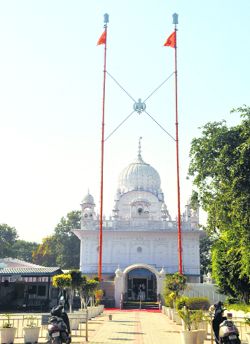 Guru Hargobind Sahib used to come to this place for resting and hunting. The first ever Sikh war in history was caused by an incident, which occurred at this place. The Sikhs caught a hawk, which was owned by Mughal emperor Shahjahan. When the Mughal soldiers came to this place and asked for the hawk, the Sikhs replied: “You are talking about the Baaj (hawk), we will soon lay our hands on your taj (crown).” As a result, an army under Mukhlis Khan was sent back. The place is named after the tree ‘Palah’ which no longer exists.
Guru Hargobind Sahib used to come to this place for resting and hunting. The first ever Sikh war in history was caused by an incident, which occurred at this place. The Sikhs caught a hawk, which was owned by Mughal emperor Shahjahan. When the Mughal soldiers came to this place and asked for the hawk, the Sikhs replied: “You are talking about the Baaj (hawk), we will soon lay our hands on your taj (crown).” As a result, an army under Mukhlis Khan was sent back. The place is named after the tree ‘Palah’ which no longer exists.
Guru Ka Bagh
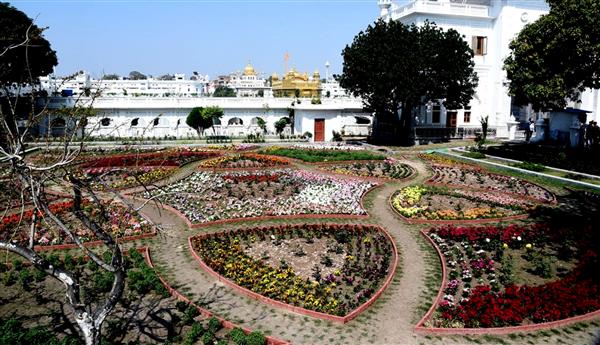 Sikh Gurus had planted an orchard near the Darbar Sahib. Recently, the SGPC had initiated the revival of the Guru Ka Bagh on a 2.5 acre plot on the Darbar Sahib complex.
Sikh Gurus had planted an orchard near the Darbar Sahib. Recently, the SGPC had initiated the revival of the Guru Ka Bagh on a 2.5 acre plot on the Darbar Sahib complex.
Gurdwara Bhai Salo di Beri (Pandori Waraich)
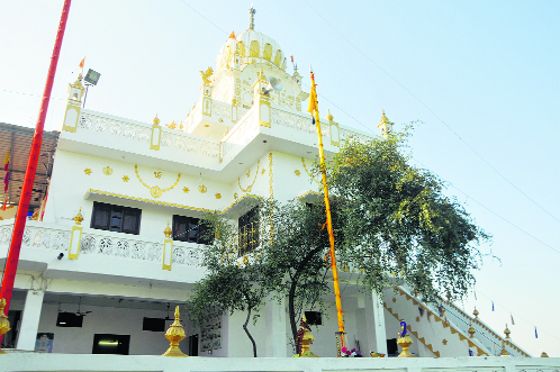 Bhai Salo ji, a prominent devotee, who was a contemporary of fifth Sikh Guru and in-charge of the construction work of the new town had stood under a jujube tree at Pandori Waraich village and stated that whosoever would donate fuel (dung cakes, wood) for baking bricks would be blessed with a son. A gurdwara has now been constructed at the place.
Bhai Salo ji, a prominent devotee, who was a contemporary of fifth Sikh Guru and in-charge of the construction work of the new town had stood under a jujube tree at Pandori Waraich village and stated that whosoever would donate fuel (dung cakes, wood) for baking bricks would be blessed with a son. A gurdwara has now been constructed at the place.
Gurdwara Lachi Ber Sahib
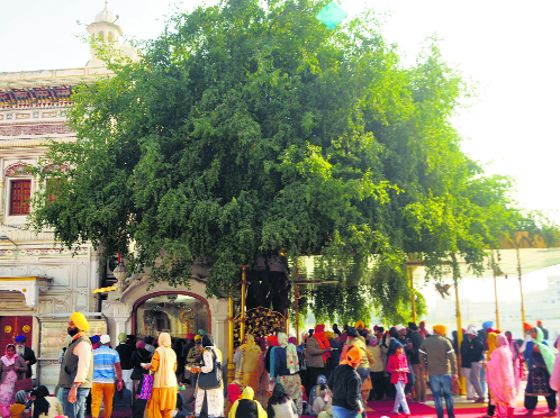 In 1577, when the excavation of Amrit Sarovar began, Guru Arjan Dev and Bhai Salo ji used to sit under this tree. In another historically important incident, Bhai Mehtab Singh and Bhai Sukha Singh tied their horses with this tree before proceeding to behead Massa Rangar to punish him for desecrating the holy place in 1797. Due to its small-sized berries (size of cardamom), it is called lachi ber.
In 1577, when the excavation of Amrit Sarovar began, Guru Arjan Dev and Bhai Salo ji used to sit under this tree. In another historically important incident, Bhai Mehtab Singh and Bhai Sukha Singh tied their horses with this tree before proceeding to behead Massa Rangar to punish him for desecrating the holy place in 1797. Due to its small-sized berries (size of cardamom), it is called lachi ber.
Gurdwara Dukh Bhanjni Beri
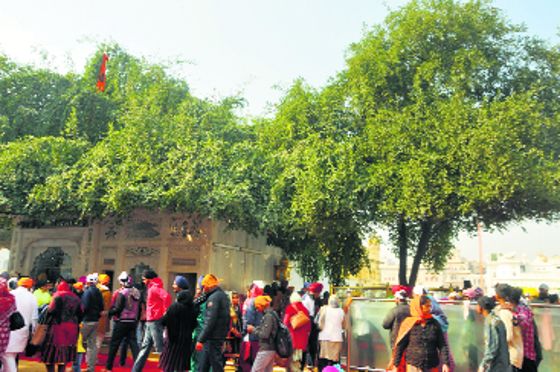 The story of Bibi Rajni and the metamorphosis of her leper husband is believed to have happened under this jujube tree. The believers take a dip in the sarovar under this tree till date to find solace from their troubles.
The story of Bibi Rajni and the metamorphosis of her leper husband is believed to have happened under this jujube tree. The believers take a dip in the sarovar under this tree till date to find solace from their troubles.
Gurdwara Ber Sahib (Mattewal)
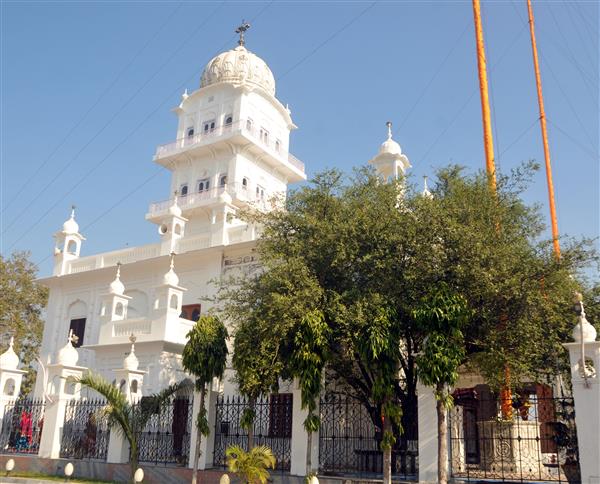 The place is associated with Guru Hargobind Sahib. It is believed that the Sikh master rested at the site under a jujube tree.
The place is associated with Guru Hargobind Sahib. It is believed that the Sikh master rested at the site under a jujube tree.
Ber Baba Buddha Sahib
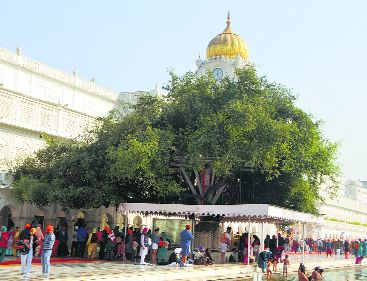 Under this holy tree, which exists till date, Baba Buddha, who remained closely associated with the first six Sikh Gurus, camped to oversee the excavation of the holiest of the ponds — the Amrit Sarovar.
Under this holy tree, which exists till date, Baba Buddha, who remained closely associated with the first six Sikh Gurus, camped to oversee the excavation of the holiest of the ponds — the Amrit Sarovar.
Gurdwara Bohri Sahib (Kot Khalsa)
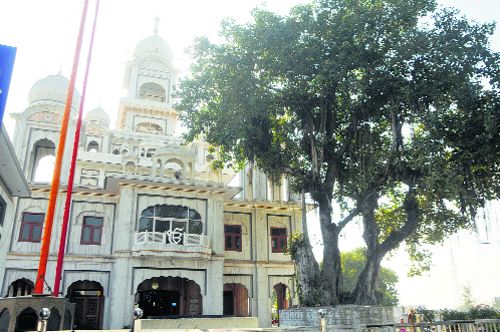 The place is on the old route from Amritsar to Guru Ki Wadali. Guru Arjan Dev used to stop under this tree whenever he travelled on this route.
The place is on the old route from Amritsar to Guru Ki Wadali. Guru Arjan Dev used to stop under this tree whenever he travelled on this route.
Gurdwara Toot Sahib (Sultanwind)
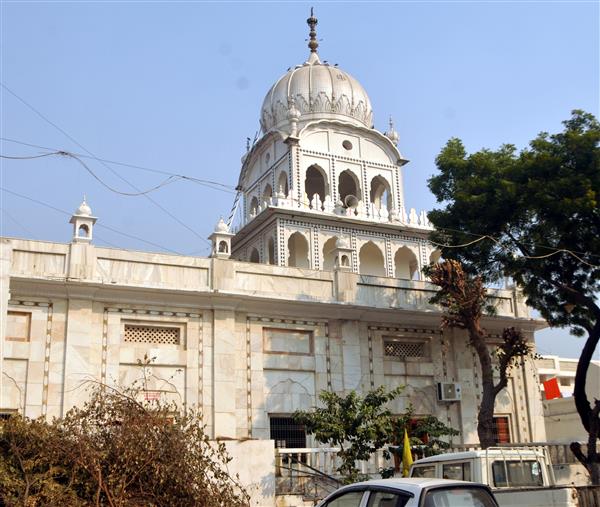 The place in Sultanwind village is named after a mulberry tree associated with the Sixth Sikh Master. In an interesting incident, Bhai Manjh Ji had fallen into a well near the tree, when he had gone to bring the firewood for the langar. Guru Hargobind and devotees found him standing in the well with the wooden logs on his head, as he did not want these to get wet.
The place in Sultanwind village is named after a mulberry tree associated with the Sixth Sikh Master. In an interesting incident, Bhai Manjh Ji had fallen into a well near the tree, when he had gone to bring the firewood for the langar. Guru Hargobind and devotees found him standing in the well with the wooden logs on his head, as he did not want these to get wet.
Gurdwara Pipli Sahib (Putlighar)
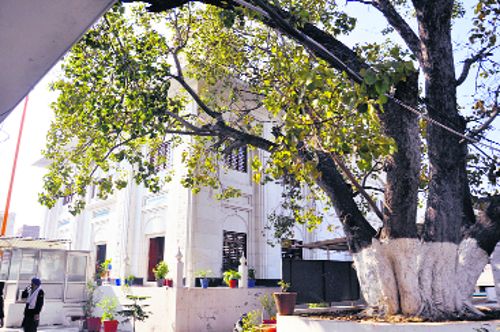 The place on Amritsar-Lahore-Kabul route had a pipal tree under which Guru Arjan Dev welcomed devotees from Afghanistan and north-western districts for the excavation of holy sarovar at the Darbar Sahib. It was at this place, that the 6th Sikh master — Guru Hargobind Singh — rested after killing Mukhlis Khan in the first battle with the Mughal army in Sikh history.
The place on Amritsar-Lahore-Kabul route had a pipal tree under which Guru Arjan Dev welcomed devotees from Afghanistan and north-western districts for the excavation of holy sarovar at the Darbar Sahib. It was at this place, that the 6th Sikh master — Guru Hargobind Singh — rested after killing Mukhlis Khan in the first battle with the Mughal army in Sikh history.
Gurdwara Tahli Sahib
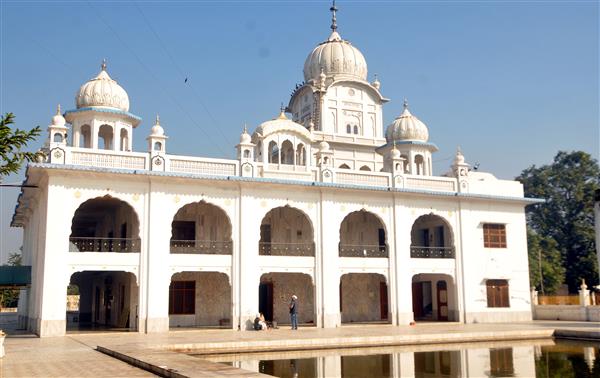 The place on Kathunangal-Mattewal Road is associated with Baba Bir Singh Naurangabadi, a prominent Sikh figure of the 18th century. Several other gurdwaras in Punjab associated with him are known as Tahli Sahib.
The place on Kathunangal-Mattewal Road is associated with Baba Bir Singh Naurangabadi, a prominent Sikh figure of the 18th century. Several other gurdwaras in Punjab associated with him are known as Tahli Sahib.
Spiritual roots
{$excerpt:n}
